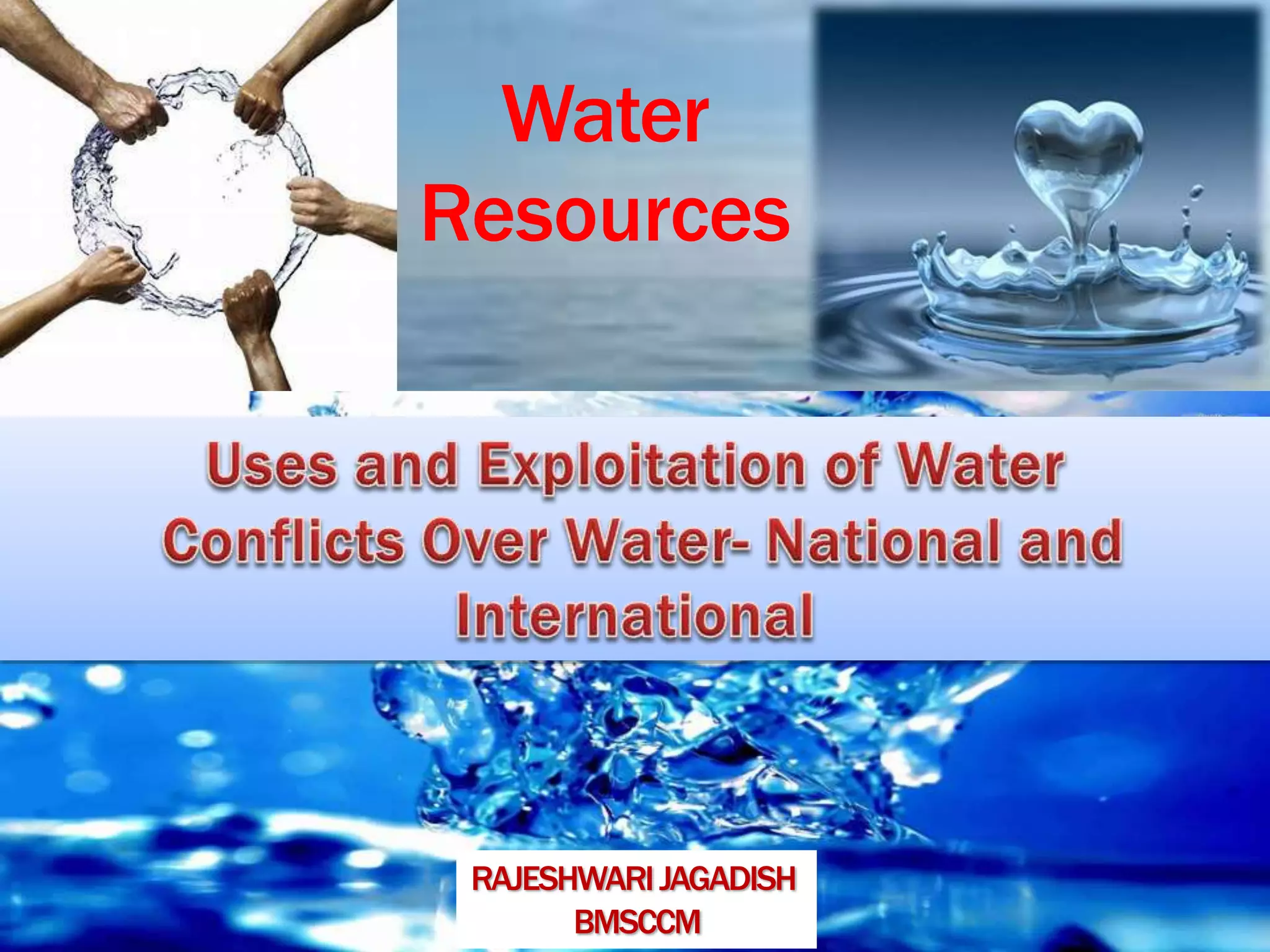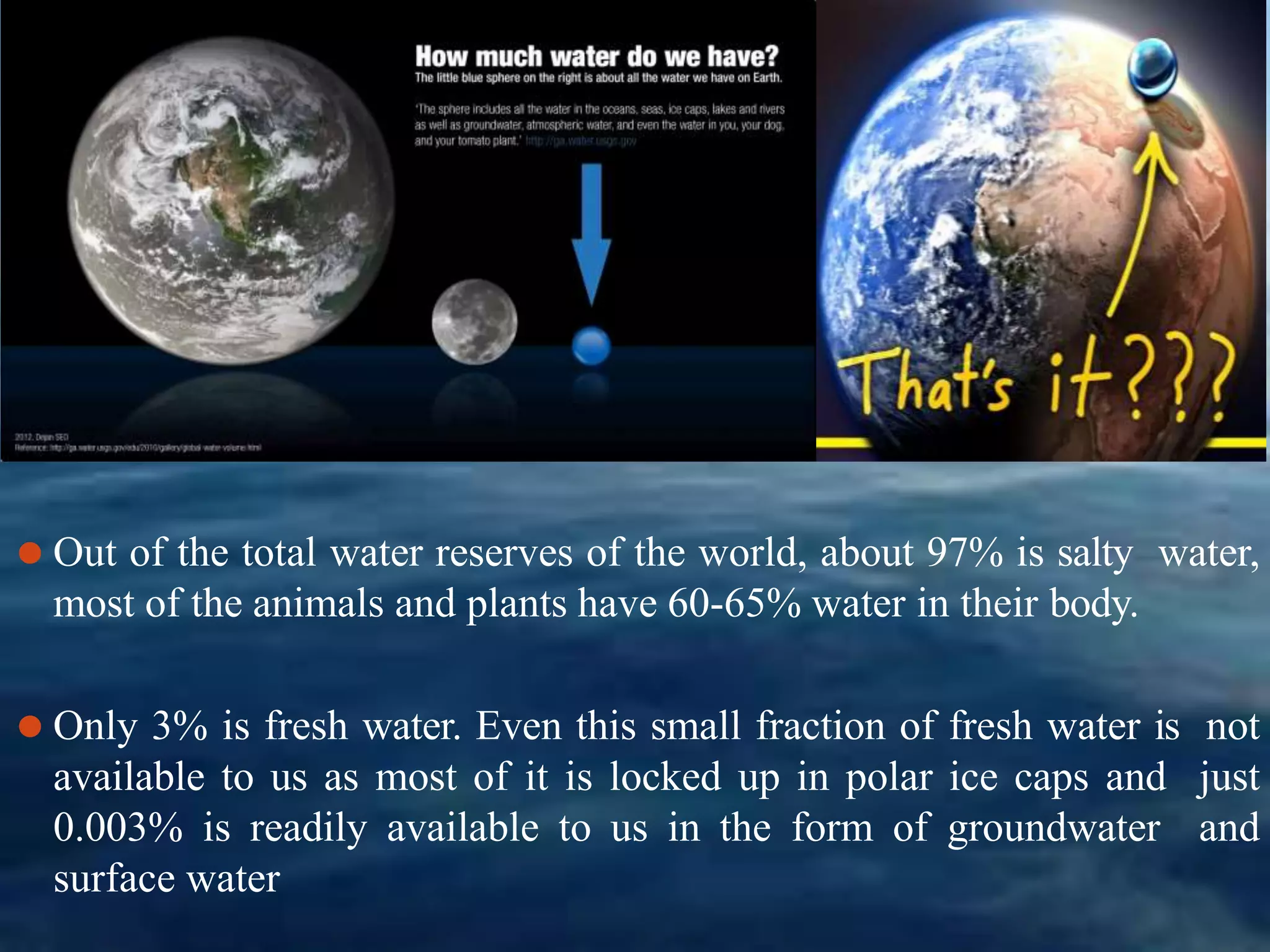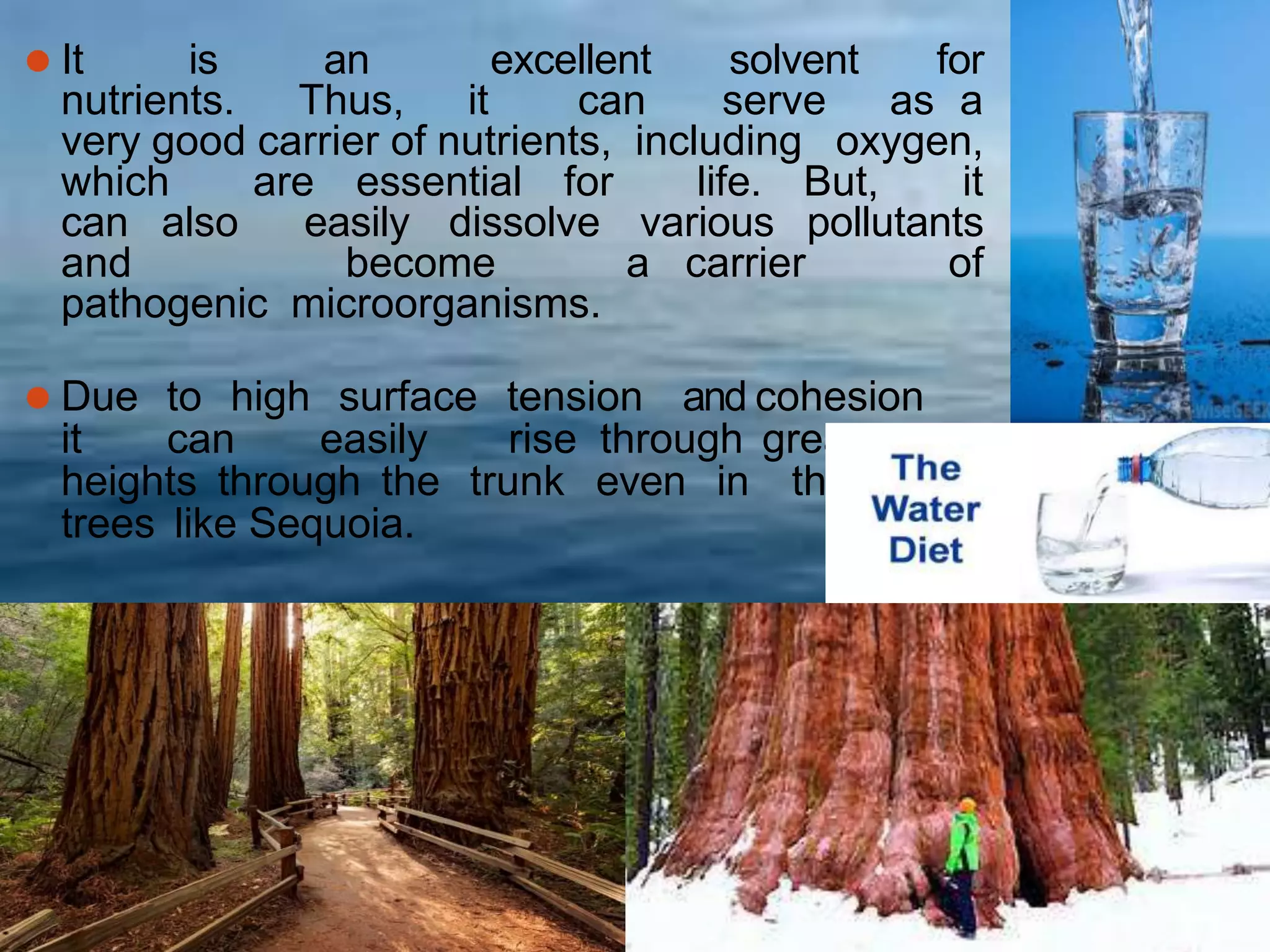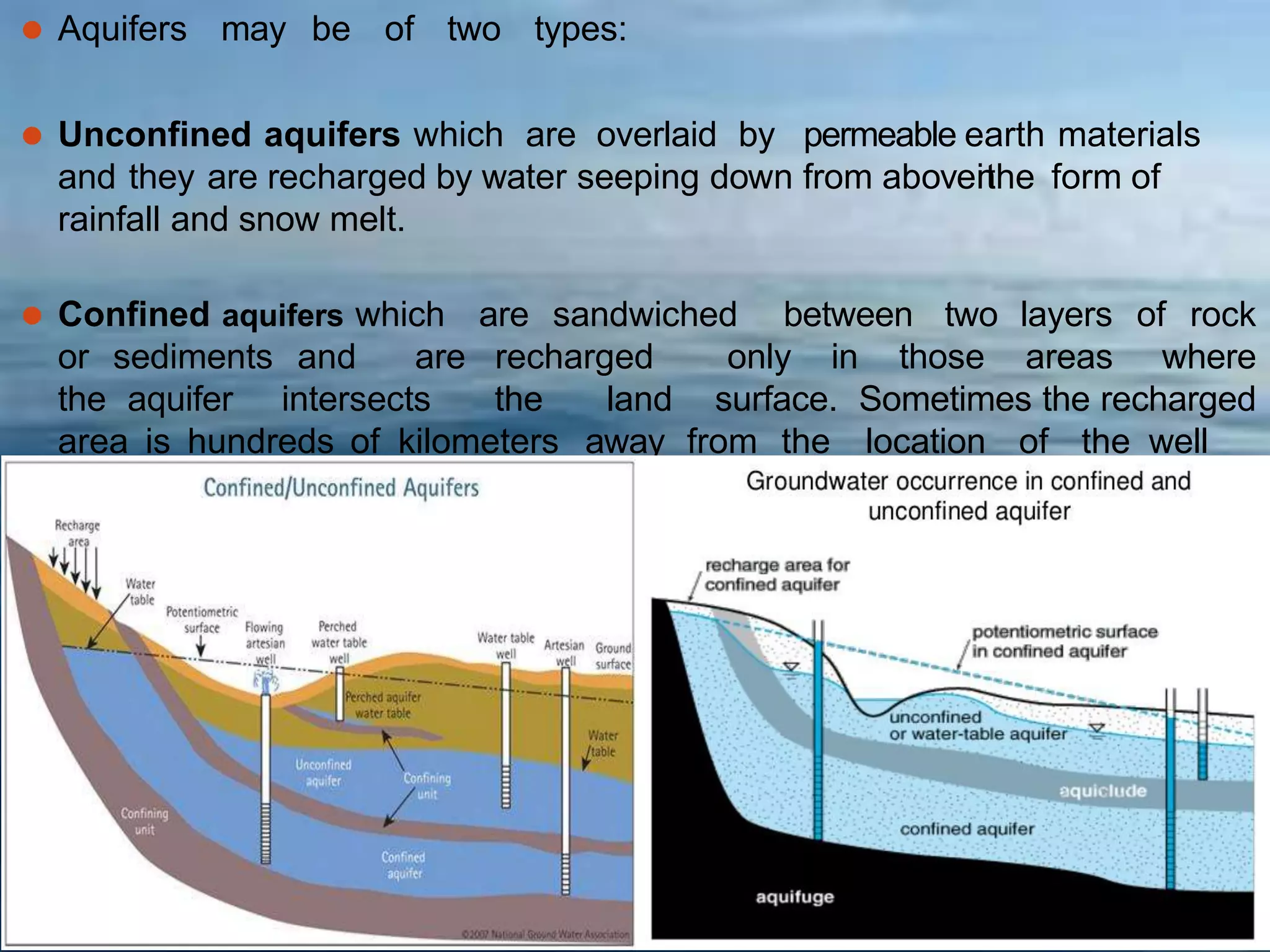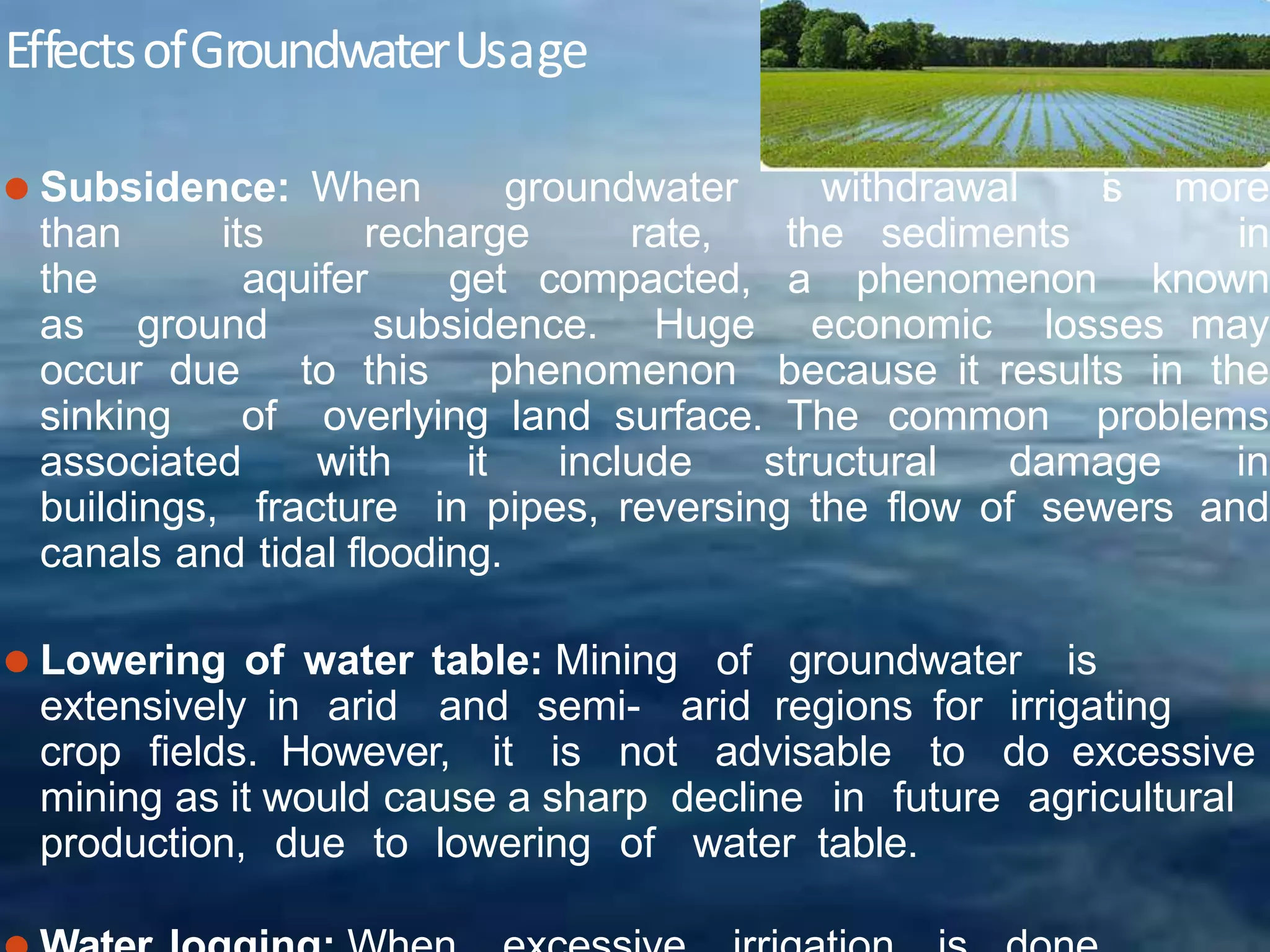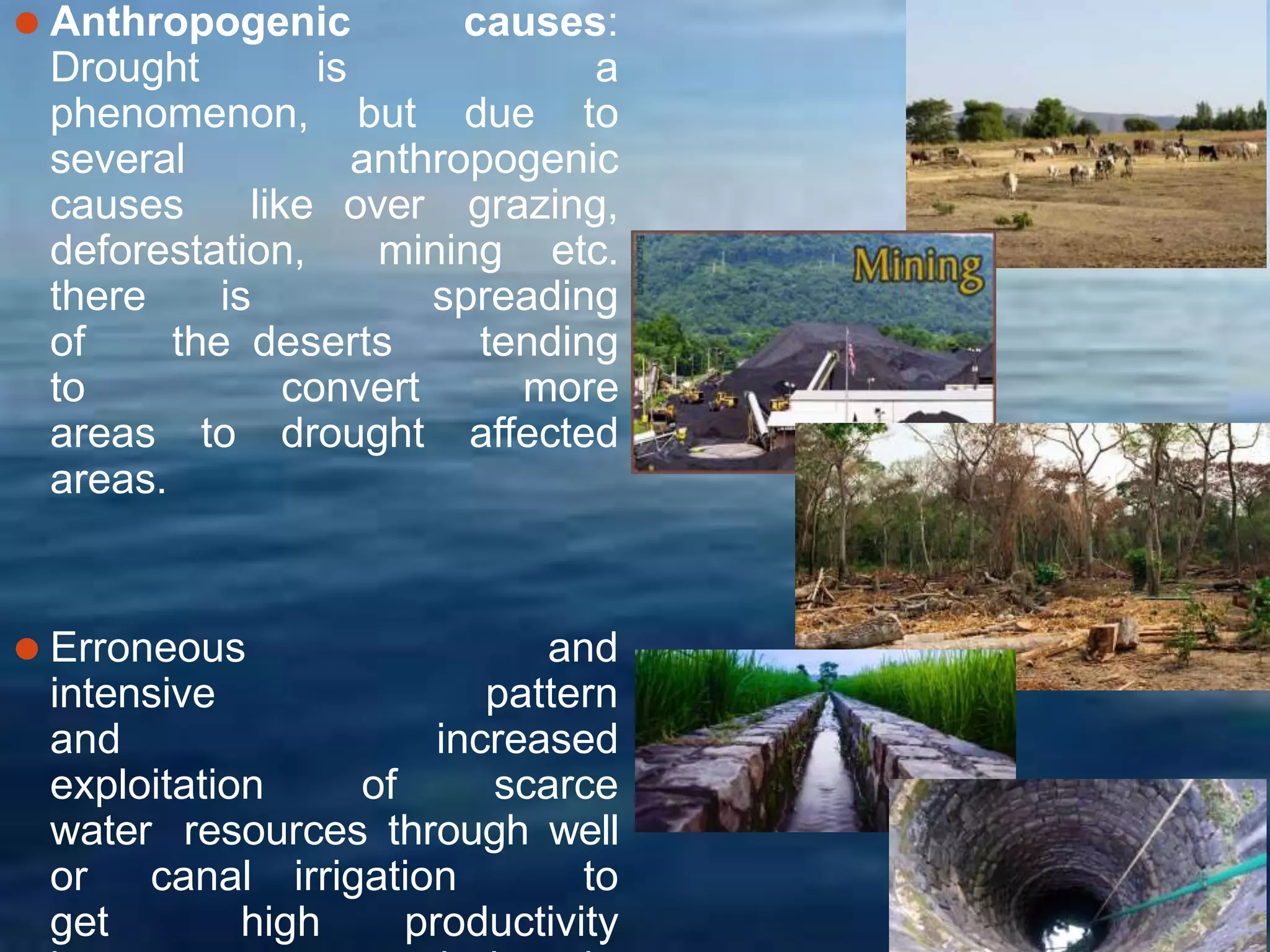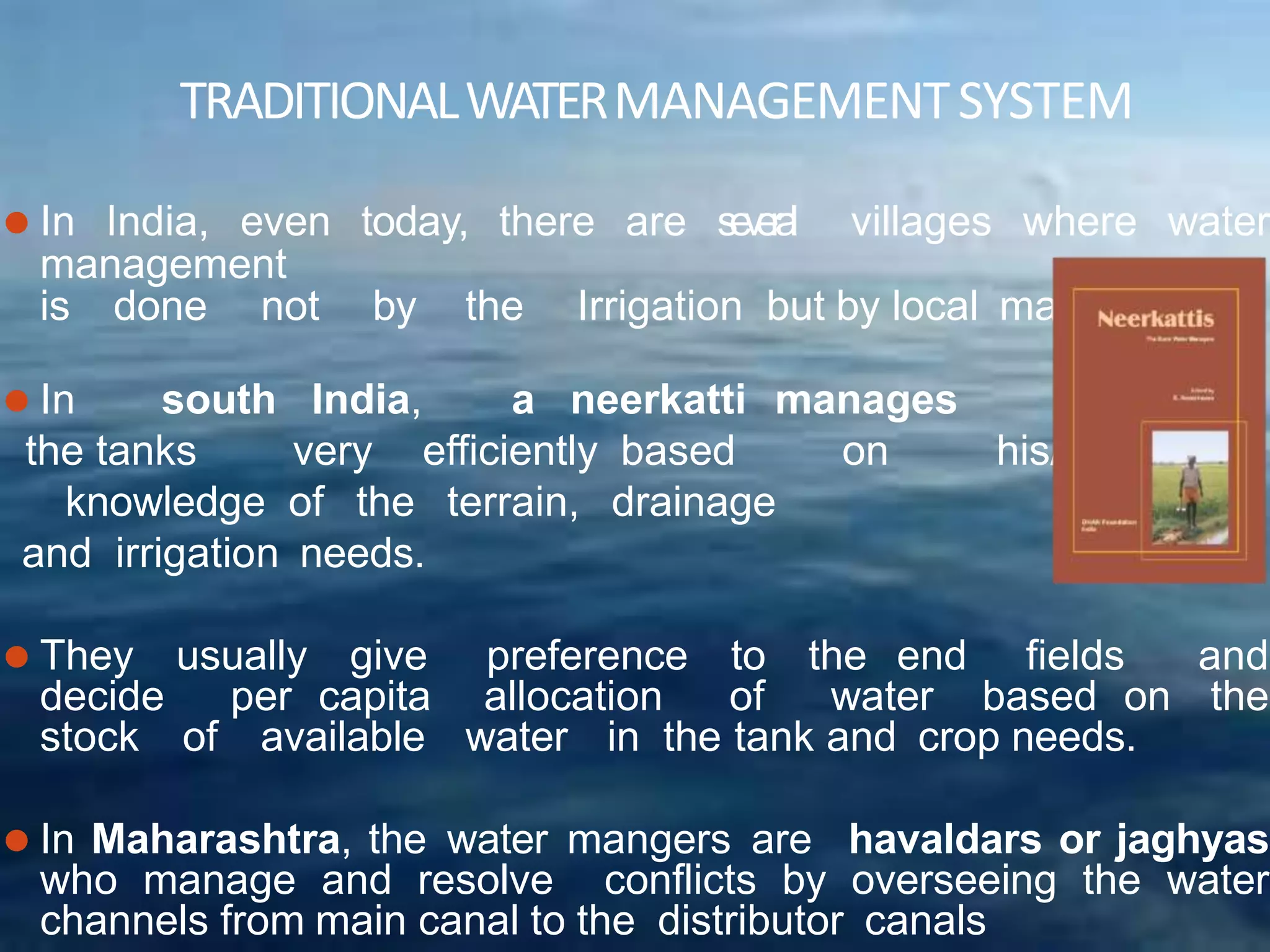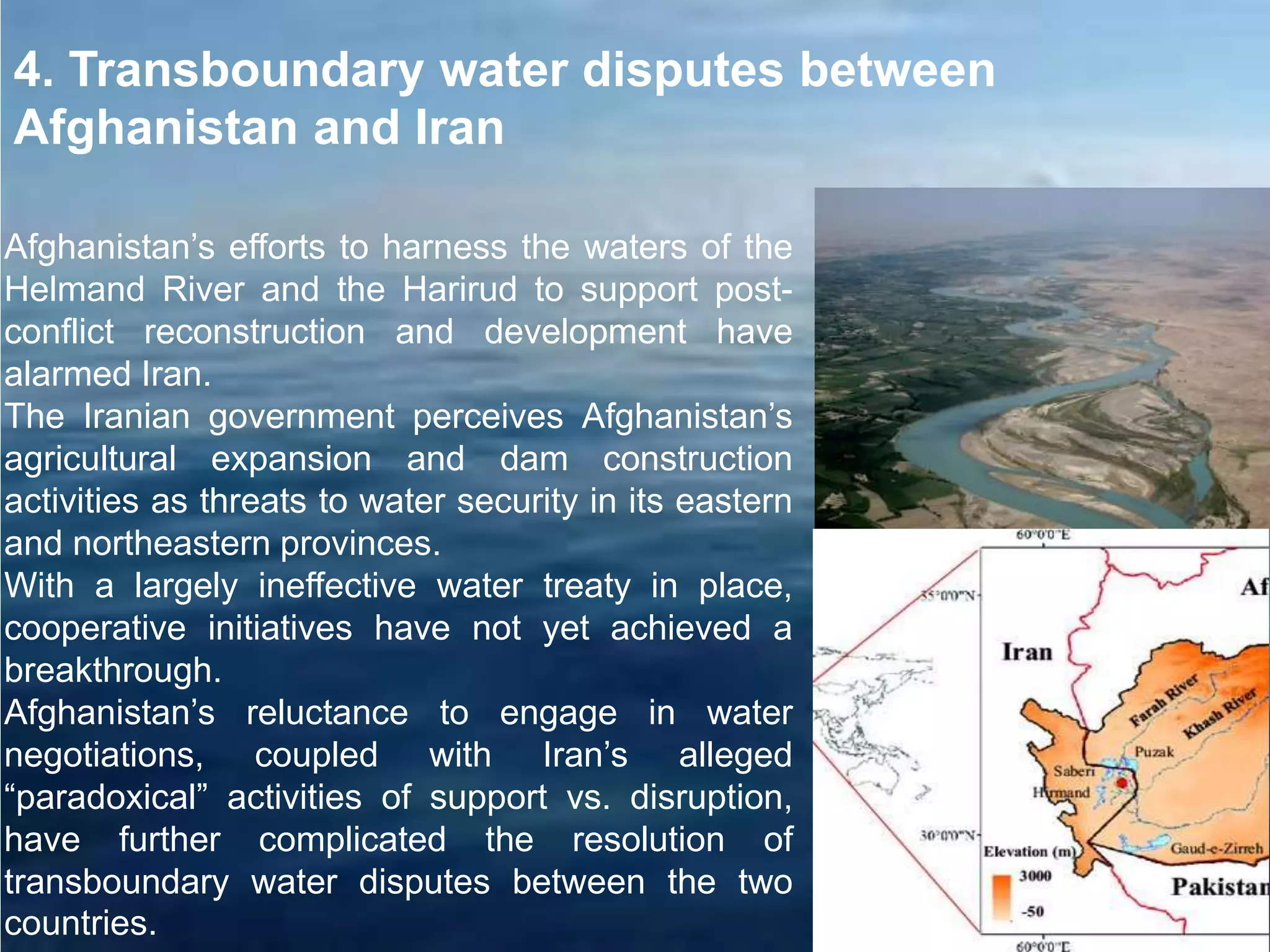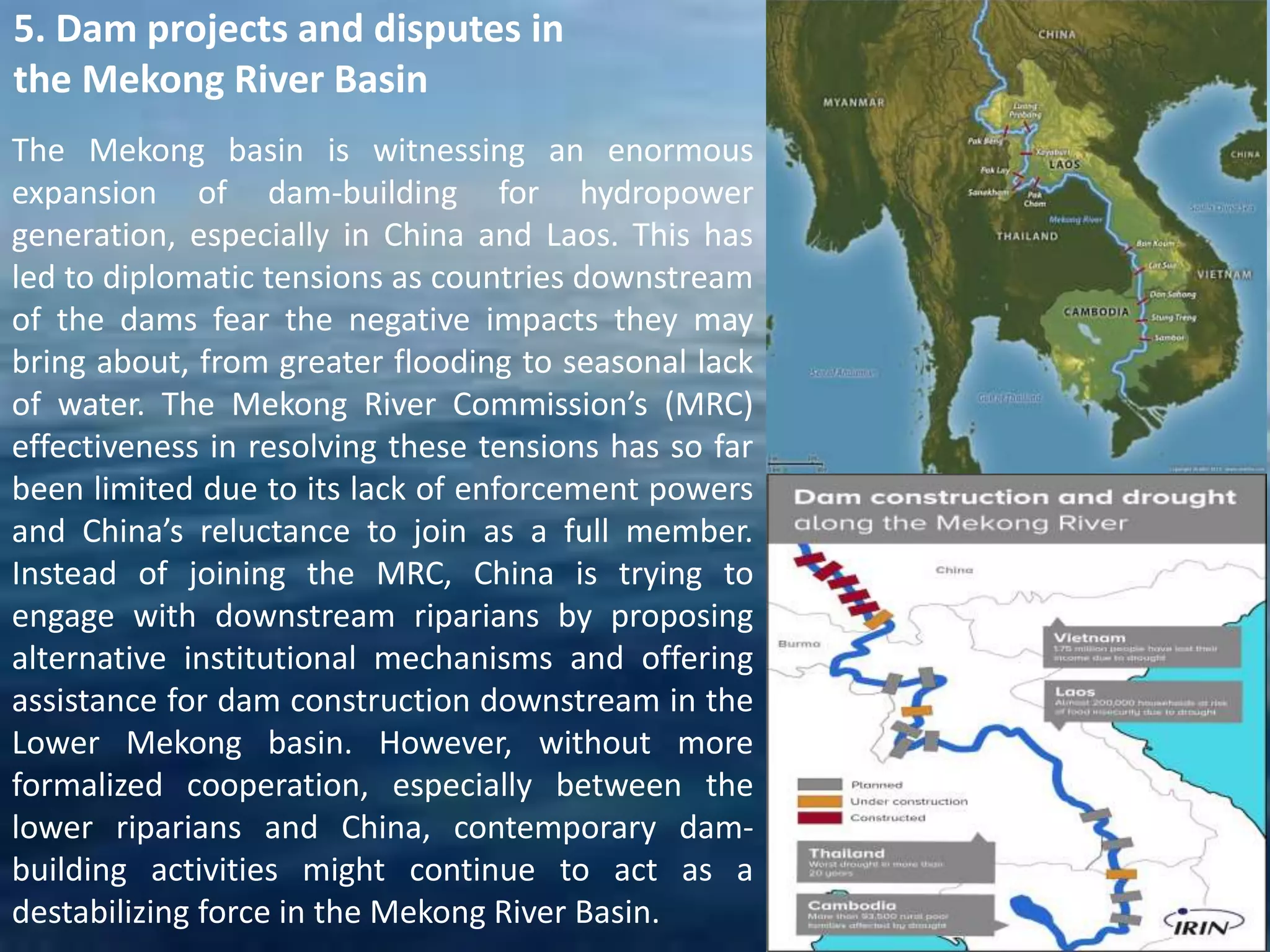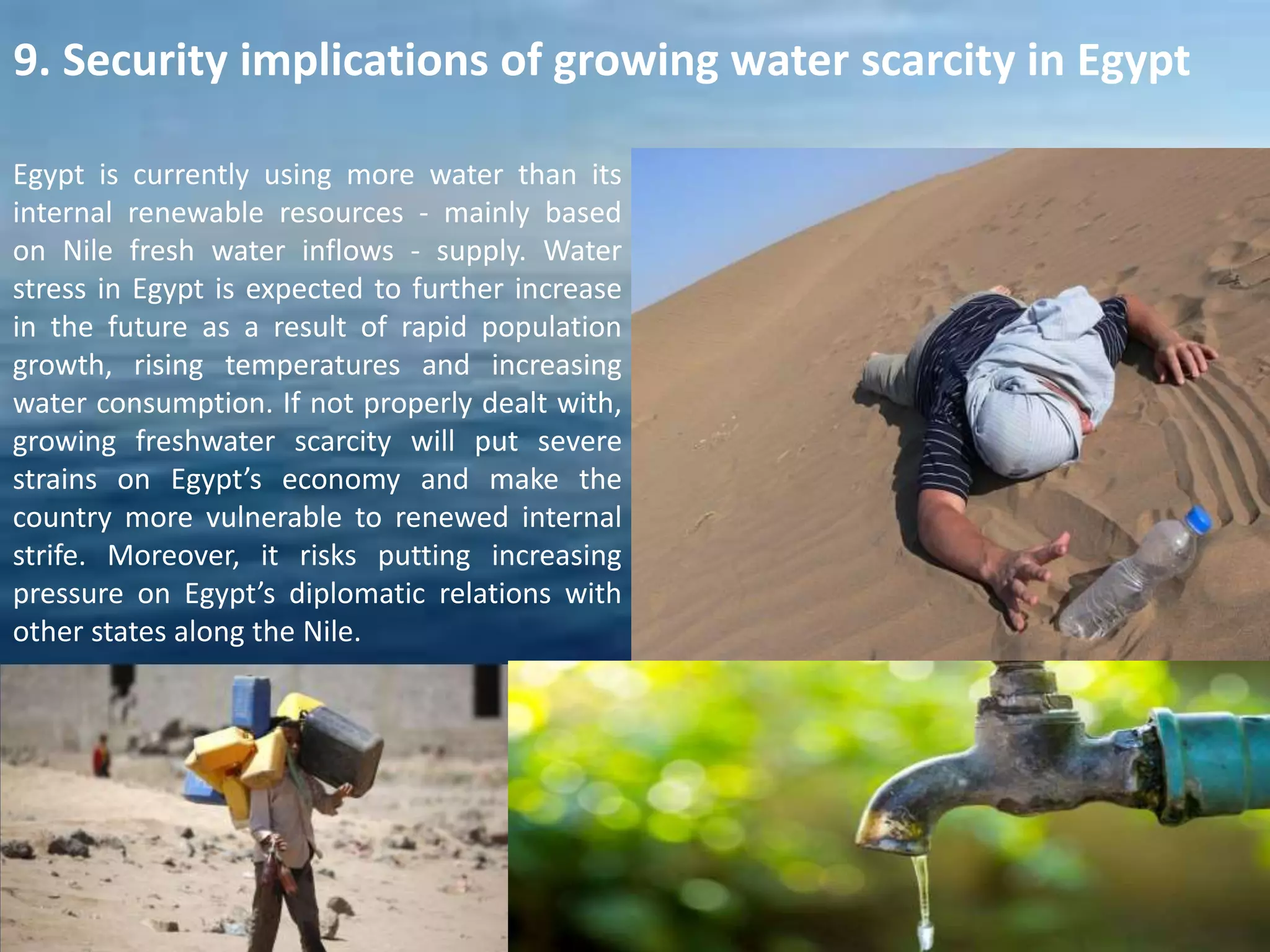Water is essential for life, yet its availability is increasingly threatened by climate change, over-exploitation, and poor management, leading to conflicts and environmental issues. While 97% of the Earth's water is salty, only 3% is fresh, and even this is not easily accessible; overuse of groundwater can result in subsidence and lowered water tables. Regional disputes, such as those in Yemen, the Nile Basin, and between Afghanistan and Iran, highlight the complex geopolitical tensions surrounding water resources.
